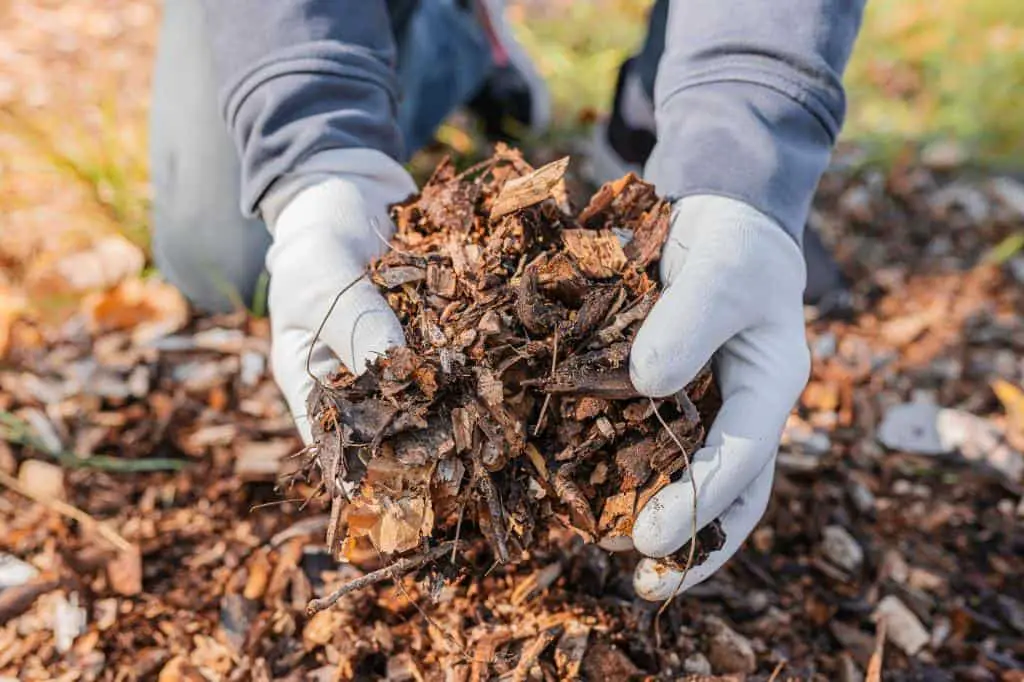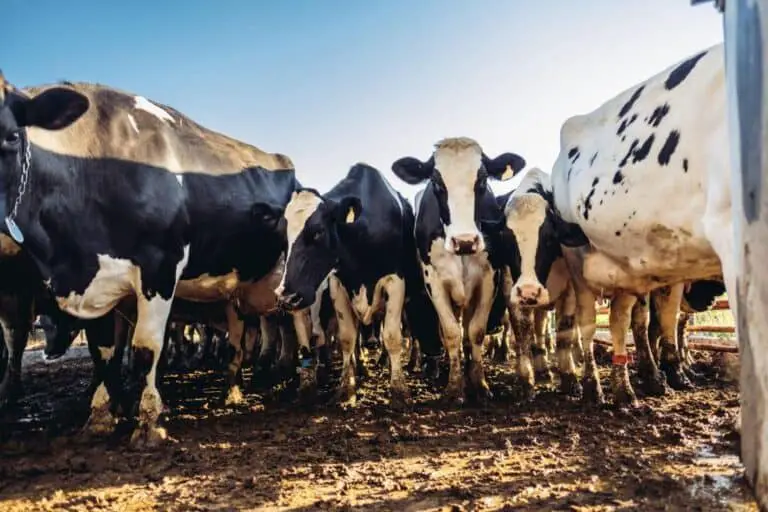Fast and Effective Methods to Compost Your Leaves: Speed Up the Process

As autumn approaches, the vibrant colors of the foliage begin to fade, leaving behind a blanket of fallen leaves in our yards. You might be tempted to rake them up and throw them away as waste. Instead, why not turn these golden treasures into nutrient-rich compost for your garden? Composting leaves allows you to reduce waste disposal costs. It helps promote sustainable gardening practices and supports healthy plant growth.
Furthermore, you can use fast, effective methods to compost your leaves. This can fit seamlessly into busy lifestyles. Many homeowners are eager to embrace sustainable practices but struggle with time constraints. This article will delve into techniques for quick solutions. It’s designed for those who want to meet sustainability goals.
If you’re ready to transform those piles of fallen leaves into invaluable organic gold within your own backyard oasis, read on! You can do it effortlessly and efficiently. In the following sections, we’ll explore some proven methods. They will speed up leaf decomposition and produce nutrient-rich compost quickly.
Get ready to enhance both the health of your garden and your green thumb skills – all while reducing waste!
Why You Need to Compost Your Leaves
Composting is a natural process that breaks down organic materials into rich humus. It serves as a soil amendment packed with essential nutrients. By composting leaves instead of throwing them away or burning them, you can divert valuable organic matter from landfills. You can also create a free source of high-quality fertilizer for your plants.
This practice contributes to environmental preservation. It also offers an opportunity to cultivate healthier gardens without using synthetic fertilizers. By converting fallen leaves into nutrient-rich compost, you reduce waste. You also enhance your garden’s fertility. Let’s explore the compelling reasons to embrace leaf composting:
- Resourceful Recycling: Leaves are a valuable resource, and composting them transforms this often-overlooked waste into a powerful organic fertilizer. This cost-effective method reduces reliance on synthetic alternatives, promoting sustainability.
- Wealth of Nutrients: Fallen leaves contain essential nutrients like nitrogen, phosphorus, and potassium. Composting allows these nutrients to be released gradually. It provides a natural and steady nourishment source for your plants.
- Enhanced Soil Structure: Leaf compost improves soil fertility and structure, enhancing water retention and drainage. This creates a favorable environment for plant roots, promoting overall garden health.
- Weed Suppression: A layer of leaf compost acts as a natural weed barrier, minimizing the need for harmful chemical weed control. This eco-friendly approach keeps your garden thriving while reducing its environmental impact.
Choosing the Right Composting Method

Putting your leaves in compost can be done in a number of different ways. Each method has its own advantages and considerations, so it’s important to find the one that works best for your situation.
One traditional method is using a backyard pile. This involves simply creating a mound of leaves in an out-of-the-way area of your yard. The advantage of this method is that it requires no additional equipment or cost. However, it may take longer for the leaves to break down without proper aeration or insulation.
Another option is using enclosed bins or tumblers specifically designed for composting. These containers provide controlled airflow and temperature. They help speed up decomposition significantly.
They also prevent pests from accessing the decomposing material and help retain moisture in dry climates. However, they do require an upfront investment and need regular monitoring and maintenance.
For those seeking a more compact solution, vermicomposting might be worth considering. Vermicomposting involves using worms (specifically red wigglers) to accelerate decomposition through their digestive process. It requires little space and can even be done indoors if desired. Plus, worm castings (their waste) make fantastic fertilizer due to their high nutrient content!
Vermicomposting has some limitations on what materials can be added, though. Citrus fruits, for example, are not suitable for worms’ digestion.
You can make an informed decision by weighing these options against each other. Backyard piles require less effort but take longer. Enclosed bins offer faster results, but they have higher initial costs. Your decision will be based on your available time, resources, and gardening goals.
Fast and Effective Methods to Compost Your Leaves
1. Shredding for Swifter Decomposition
Shredding your leaves accelerates the composting process. It increases surface area, allowing for faster microbial breakdown. Use a lawnmower, leaf shredder, or simply run over them with your lawnmower to achieve finely shredded leaves.
2. Layering for Balanced Compost
Achieve a well-balanced compost by layering different materials. Alternate between layers of shredded leaves, kitchen scraps, and garden waste. This ensures a mix of carbon (browns) and nitrogen (greens), creating optimal conditions for decomposition.
3. Turning for Uniform Decomposition
Turning your compost every few weeks promotes even decomposition. Use a pitchfork or shovel to mix the outer layers with the inner core. This introduces fresh oxygen and prevents the formation of compacted, slow-decomposing areas.
4. Moisture Control for Healthy Compost
Maintain the right moisture level, akin to a wrung-out sponge. If your compost feels too dry, add water; if it’s too wet, incorporate additional browns like shredded newspaper or dry leaves. Consistent moisture fosters a thriving microbial community.
5. Insulation with Mulch
Covering your compost pile with a layer of mulch, straw, or burlap helps insulate it. This protective covering regulates temperature. It prevents extreme heat or cold from slowing down the decomposition process.
Shredding Leaves: Expediting the Decomposition Process
When it comes to composting leaves, shredding them is a game-changer. When you break down large leaf particles into smaller pieces, you create a significantly larger surface area. This gives microorganisms more room to work their magic.
One of the easiest ways to shred leaves is by using a lawnmower. Simply attach a bag or mulching attachment, set your mower to its highest deck setting, and run over the piles of leaves. The spinning blades will chop them into fine bits that are perfect for composting.
If you’re looking for more efficient methods, consider investing in a leaf vacuum shredder tool. These machines collect fallen leaves and shred them simultaneously. This makes clean-up and composting a breeze.
For those who prefer DIY alternatives, there are several options available as well. You can use a regular garden rake or pitchfork to manually break down the leaves into smaller pieces before adding them to your pile. Another idea is to create your own homemade leaf shredder using PVC pipes and rotating arms driven by an electric drill – an inexpensive yet effective solution.
Mixing Green Material: Turbocharging Your Compost
One effective technique for speeding up leaf decomposition is mixing green material with brown leaves. Green materials, such as grass clippings, add nitrogen to the mix. They activate the compost pile by providing essential microbes. The microbes help break down organic matter more rapidly.
To balance the ratio correctly and achieve optimal results, aim for a 2:1 ratio of brown materials (leaves) to green materials (grass clippings). Too much green material can lead to a smelly, slimy pile that doesn’t decompose efficiently. On the other hand, too many leaves will result in slow decomposition due to a lack of nitrogen.
By incorporating this technique into your composting routine, you’ll find that adding some fresh grass clippings for composting or other green waste alongside your fallen leaves significantly accelerates decomposition.
Not only does it facilitate faster breakdown, but it also ensures nutrient-rich compost, which can be used as an excellent soil amendment for gardens and potted plants.
Moisture Management: Creating an Optimal Environment for Decomposition
One of the key factors in speeding up the composting process is maintaining appropriate moisture levels within your leaf compost pile. Moisture plays a crucial role in facilitating microbial activity. Microbes break down organic matter and turn it into nutrient-rich soil. Without sufficient moisture, this microbial activity can slow down or come to a halt altogether.
So how do you assess and adjust moisture levels within your compost pile? One simple method is what’s known as the squeeze test. Grab a handful of your compost material and give it a firm squeeze.
If water drips out between your fingers, then it’s too wet and needs more dry materials (such as leaves or newspaper) to help absorb excess moisture. On the other hand, if you can barely squeeze any liquid out and the material feels dry and crumbly, then it’s too dry, requiring some watering.
Aerating the Pile
Regularly aerating your leaf compost pile is crucial for its decomposition process. By providing oxygen to the microorganisms responsible for breaking down the leaves, you help them thrive. This helps them carry out their work more efficiently. Neglecting aeration can lead to anaerobic conditions, slowing down decomposition and causing foul odors.
One effective method of aerating your compost pile is to turn it regularly with a pitchfork or garden fork. This simple action helps mix up the organic materials, ensures an even distribution of moisture, and introduces fresh air into the center of the pile. Aim to turn your compost at least once a week, or more frequently if possible.
Alternatively, you may consider using an aerator tool specifically designed for this purpose. These tools have long handles with built-in rotating spikes that penetrate deep into the compost pile when twisted. By repeatedly inserting and withdrawing these spikes, you can create pathways for oxygen. This will maintain the overall structure.
For those seeking low-maintenance options, passive-aeration systems are worth exploring. These involve constructing slightly raised bins or cages with sufficient space between slats or wire mesh to allow airflow from all sides. As gravity naturally pulls air through these openings while the wind passes by, constant circulation assists in keeping your leaf compost well-oxygenated without requiring manual turning.
Utilizing Compost Accelerators (Optional)
If you’re looking to speed up the decomposition process of your leaf compost, consider using compost accelerators. These products are specially formulated to provide microorganisms with an extra boost. This helps them break down organic matter more quickly. They come in various forms, such as powders, liquids, or granules, and can be easily incorporated into your pile.
When using compost accelerators, it’s important to choose organic options that contain natural ingredients. This ensures that you maintain the integrity of your composting practices. You can also still reap the benefits of faster decomposition. Look for products that include beneficial bacteria and fungi strains. These are known for their ability to break down organic material effectively.
| Also see: Soil or compost for Lawn Grass Seed. |
Timing and Harvesting
Composting leaves is a natural process that takes time. However, there are ways to speed up decomposition for faster results. On average, it can take anywhere from six months to two years for leaves to fully break down into nutrient-rich compost. However, with the right techniques and conditions, you can significantly reduce this timeframe.
Keep an eye on your compost pile and be patient as nature works its magic. As the leaves decompose, they will begin to turn dark brown or even black in color. This is a clear sign that the organic matter is breaking down thoroughly and transforming into rich humus, a key component of healthy soil.
Another indicator that your compost is ready to be harvested is its smell. Fresh compost should have an earthy scent with no foul odors present. Once you notice these signs and observe that most of the leaves have broken down completely, it’s time to harvest your finished compost.
Conclusion
In conclusion, composting leaves doesn’t have to be a time-consuming and labor-intensive task. This article discusses fast and effective methods for turning an abundance of fallen leaves into nutrient-rich compost for gardens. Homeowners can employ these methods to make compost in no time.
There are plenty of options to choose from based on availability, space, and personal preferences. You can use a leaf shredder to speed up decomposition or try the quick hot. The key is to find a method that fits seamlessly into your lifestyle while still contributing to sustainable practices.
It’s important for readers to remember that composting leaves not only reduces waste but also benefits the environment. It avoids the use of chemical fertilizers and improves soil health. This natural amendment enriches our gardens with essential nutrients. It also reduces reliance on synthetic alternatives.
So why wait? Start embracing these methods today and make leaf composting a sustainable habit. Your garden will thank you for it! Happy composting!





